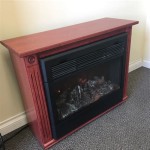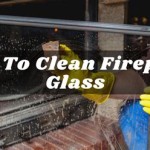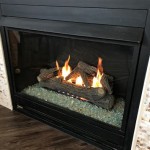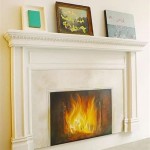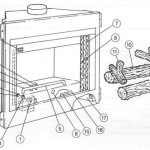```html
Can You Reface A Fireplace? A Comprehensive Guide
Fireplaces often serve as central focal points within homes, contributing significantly to both aesthetic appeal and functional warmth. Over time, however, the style may become outdated, or the existing materials might deteriorate, prompting homeowners to consider renovation options. Refacing a fireplace presents a viable alternative to a full-scale replacement, offering a cost-effective and less disruptive way to revitalize this important architectural feature.
This article comprehensively addresses the question of whether a fireplace can be refaced, detailing the process, materials, considerations, and potential benefits and drawbacks. It aims to provide homeowners with the necessary information to make informed decisions regarding their fireplace renovation projects.
Understanding Fireplace Refacing
Fireplace refacing involves updating the exterior surface of an existing fireplace without significantly altering its structural components. This typically means removing the existing facade – such as brick, stone, or tile – and replacing it with new materials to achieve a desired aesthetic. The firebox itself, the chimney, and the overall fire-resistant structure remain intact. Refacing is distinct from a complete fireplace replacement, which involves removing the entire unit and installing a new one from scratch. This difference has significant implications for cost, time, and the complexity of the project.
The primary motivation for refacing is often cosmetic. Outdated styles can detract from the overall look of a room, and refacing allows homeowners to modernize their fireplace to better align with current design trends. However, refacing can also address functional issues, such as damaged or deteriorating materials that compromise the fireplace's appearance and, potentially, its safety.
The scope of a refacing project can vary considerably. Some projects may involve simply replacing the surround or mantle, while others may entail a more extensive overhaul of the entire facade, including the hearth and any surrounding architectural elements. The complexity of the project will influence the cost, timeline, and required level of professional expertise.
The Refacing Process: A Step-by-Step Overview
The fireplace refacing process typically involves several distinct stages, each requiring careful planning and execution. These stages may be overlapping, but the basic principle remains the same.
1. Assessment and Planning: The initial step involves a thorough assessment of the existing fireplace. This includes evaluating the structural integrity of the firebox and chimney, identifying any existing damage or safety concerns, and determining the scope of the refacing project. During this phase, homeowners should also consider their desired aesthetic, budget constraints, and any building codes or regulations that may apply.
2. Material Selection: Choosing the appropriate materials is crucial to the success of the refacing project. Common materials include brick, stone (natural or cultured), tile (ceramic, porcelain, or mosaic), wood, and metal. The selection process should consider factors such as aesthetics, durability, heat resistance, maintainability, and cost. The existing style of the house will often guide the design principles.
3. Demolition and Preparation: Before installing new materials, the existing facade must be removed. This typically involves carefully chipping away the old brick, stone, or tile, taking care not to damage the underlying structure. Once the old materials are removed, the surface must be cleaned and prepared to ensure proper adhesion of the new materials. This may involve patching any cracks or holes, applying a bonding agent, or creating a level surface.
4. Installation: The new materials are then installed according to the manufacturer's instructions and industry best practices. This process may involve applying mortar, adhesive, or other bonding agents, and carefully aligning and securing the new materials to the fireplace surround. Precision and attention to detail are essential to achieve a professional and aesthetically pleasing result. For example, stone work tends to require special tools and considerations for weight distribution.
5. Finishing and Sealing: Once the new materials are installed, the project may require finishing touches such as grouting tile, applying sealant to stone, or painting or staining wood. These finishing steps enhance the appearance of the refaced fireplace and provide added protection against moisture and wear. Sealants can also improve cleanability and prevent staining.
Key Considerations for a Successful Refacing Project
Several key considerations can significantly impact the success of a fireplace refacing project. Addressing these factors proactively can help homeowners avoid costly mistakes and ensure a satisfying outcome.
Structural Integrity: Before embarking on a refacing project, it is crucial to ensure that the fireplace's structural components are in good condition. Cracks in the firebox, a deteriorating chimney, or other structural issues must be addressed before any cosmetic work is undertaken. Neglecting structural problems can compromise the safety and functionality of the fireplace and potentially lead to more extensive and expensive repairs down the line.
Building Codes and Regulations: Fireplace renovations are often subject to local building codes and regulations. These regulations may dictate specific requirements for materials, clearances, and installation techniques. Homeowners should consult with their local building department to determine the applicable codes and ensure that their refacing project complies with all relevant requirements. Failure to comply with building codes can result in fines, delays, or even the need to redo the work.
Professional Expertise: While some homeowners may be tempted to undertake a fireplace refacing project as a DIY endeavor, it is generally advisable to hire a qualified professional. Refacing a fireplace requires specialized knowledge, skills, and tools. A professional contractor can ensure that the project is completed safely, efficiently, and to a high standard of quality. They can also provide guidance on material selection, design options, and compliance with building codes. Furthermore a qualified professional is likely insured against any damage they may unintentionally cause.
Budget Constraints: The cost of refacing a fireplace can vary significantly depending on the scope of the project, the materials selected, and the labor costs. Homeowners should establish a realistic budget before starting the project and stick to it as closely as possible. It is also important to obtain multiple quotes from different contractors and compare their prices and services. In some cases, it may be necessary to make compromises on materials or design to stay within budget.
Material Compatibility: Different materials have different properties and may not be compatible with each other. For example, some types of stone may not adhere well to certain types of mortar. Homeowners should consult with a professional or do thorough research to ensure that the materials they select are compatible and will work effectively together. Improper material combinations can lead to adhesion problems, cracking, or other issues that can compromise the appearance and longevity of the refaced fireplace.
Weight Considerations: Some materials, such as natural stone, can be quite heavy. It is important to ensure that the existing fireplace structure is capable of supporting the weight of the new materials. If the structure is not strong enough, it may need to be reinforced before the refacing project can proceed. Failure to address weight considerations can lead to structural instability and potentially dangerous situations.
Benefits of Fireplace Refacing
Refacing a fireplace offers several potential benefits compared to a complete replacement. These benefits can make it an attractive option for homeowners looking to upgrade their fireplace without incurring the costs and disruptions associated with a full demolition and rebuild.
Cost-Effectiveness: Refacing is generally less expensive than replacing a fireplace. This is because it avoids the expenses associated with removing the old unit, installing a new firebox and chimney, and making structural modifications to the surrounding area. The savings can be significant, particularly for complex fireplace designs.
Reduced Disruption: Refacing is typically less disruptive than a complete replacement. It avoids the need for extensive demolition, which can generate dust, noise, and debris. The project can usually be completed in a shorter timeframe, minimizing the inconvenience to the homeowner. Because the firebox and surrounding wall remains intact, minimal disruption to the home environment tends to occur.
Aesthetic Improvement: Refacing allows homeowners to dramatically improve the appearance of their fireplace, transforming it from an outdated eyesore into a stylish focal point. With a wide range of materials, colors, and designs to choose from, homeowners can create a fireplace that perfectly complements their home's décor. Materials like granite, marble, or custom tiles can lend a sleek and luxurious appearance.
Increased Home Value: A well-designed and updated fireplace can increase the value of a home. It can enhance the overall aesthetic appeal and create a warm and inviting atmosphere that appeals to potential buyers. In a competitive real estate market, a renovated fireplace can be a valuable selling point.
Preservation of Existing Structure: Refacing allows homeowners to preserve the existing structure of their fireplace, which may have sentimental or architectural value. This can be particularly important for older homes with unique or historical fireplace designs. By retaining the original structure, homeowners can maintain the character and charm of their homes while still updating the appearance.
In conclusion, refacing a fireplace can be a worthwhile investment for homeowners seeking to improve the aesthetics, functionality, and value of their homes. By carefully considering the factors outlined in this article and seeking professional guidance when needed, homeowners can ensure a successful and satisfying refacing project.
```
15 Fabulous Fireplace Refacing Ideas Average But Inspired

Reface A Fireplace With The Look Of Stone Or Brick Barron Designs

Reface A Fireplace With The Look Of Stone Or Brick Barron Designs

Reface Your Fireplace Fresh New Look Hearth Remodeling

Fireplace Refacing How You Can Improve Your

Diy Fireplace Makeover Wood Slat

How To Reface A Fireplace We Love Fire

Refacing Fireplace And Chimney Authority

10 Fireplace Makeover Ideas Before And After Regency

Refacing Fireplace And Chimney Authority
Related Posts


